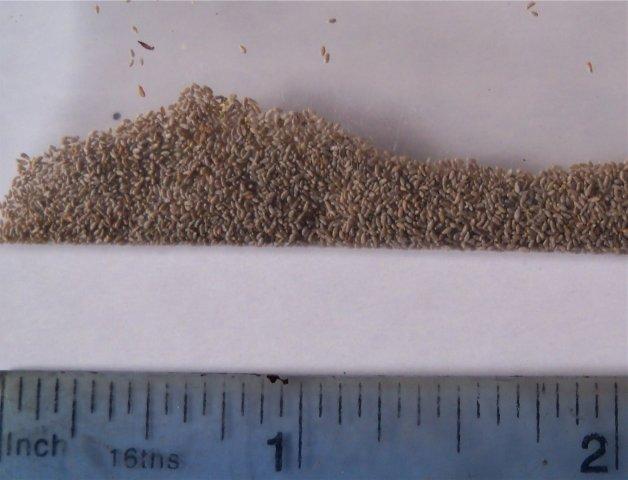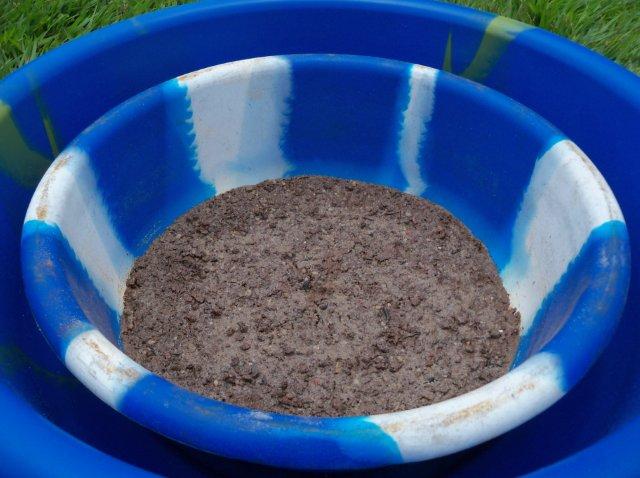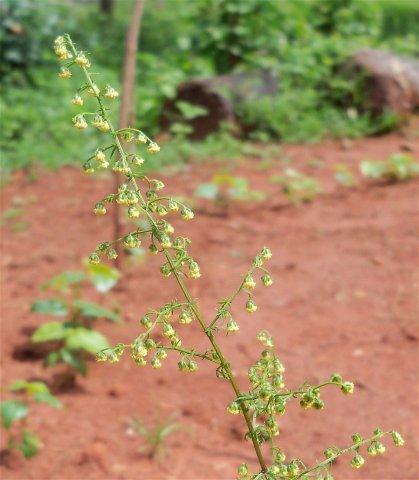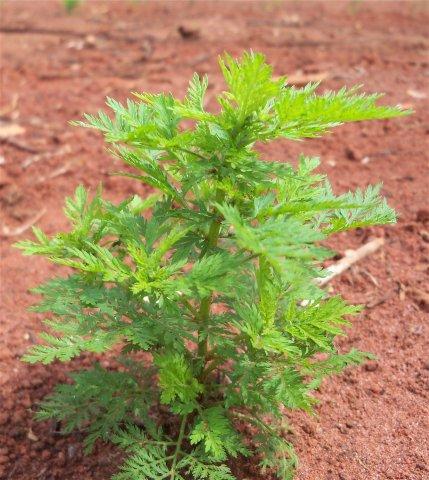Which do we talk about—the 10% success or the 90% failure? We had both. Whichever we focus on, we have learned some things in the process.
We are trying to grow Artemisia, Artemisia annua anamed, which is used extensively around the world to treat malaria. However growing it is a bit picky.
The seeds are tiny, tiny, tiny, smaller than mustard seeds. In the starter packet we bought there were 5,000 seeds in a very small plastic bag. To germinate them you don’t plant them like other seeds, you only sprinkle them on the surface of the soil. Next they like sun, but can’t be rained on. So we have one basin with holes in it sitting in a basin that contains water.
When rain comes here, which is often, we have to take them in plus we take them in at night. Tedious baby-sitting yet.
Our first planting sprouted well and were then transplanted into plastic bags. Again, we had to take them in and out of the sun or rain every day. When these seedlings were about 4” high they needed to be transplanted into the field prepared for them. Unfortunately this coincided with our trip to the US in June-July so they were bigger than they should have been when we transplanted them in August. Even before transplanting we noticed that the leaves on some of the plants already looked funny—they were blooming. Our gardener planted them all out, but 90% ended up flowering. Bummer. The others still look good.
In reviewing the literature more we found several important things about growing artemisia:
1) Stressing the plant causes it to stop growing, flower and die within 3-4 weeks. End of the plant.
2) The main cause of stress is lack of water so even here in the rainy season we needed to make sure the artemisia was well watered AND that the soil around the base of the plant was covered with mulch. We had advertently stressed the plants because they were too big for the sacks and due to lack of water.
The KEY issue when the plant is stressed and starts to flower is that the leaves now have 30% of the medicinal compounds to treat malaria. So have sown new seeds which should sprout soon and we’re carefully taking care of the 8 healthy, growing plants.
Background: The 2004 WHO Malaria Treatment update stated: “our best weapon against these resistant malaria parasites is a combination of drugs that includes a compound derived from artemisinin and anther anti-malarial.” We are following the instructions provided by Action for Natural Medicine in the Tropics (anamed) and using their variety of artemisia which has been specially bred to grow to a height of 10 feet in the tropics and have 20 times the amount of active ingredient founds in the wild form. One of these plants produces enough leaves to treat up to 10 malaria patients. Treatment is commonly through making a tea with the dried leaves. If we can get this to grow successfully and then propagate it via cuttings, we will locally produce a malaria treatment to share with others. For more information, check out the links in this post!





This is so cool! Good luck with the next batch and keeping these ones alive!!!!!
Report This Comment
moringa canada…
[…]Success and Failure with Artemisia – Ekstrands in Congo[…]…
Report This Comment